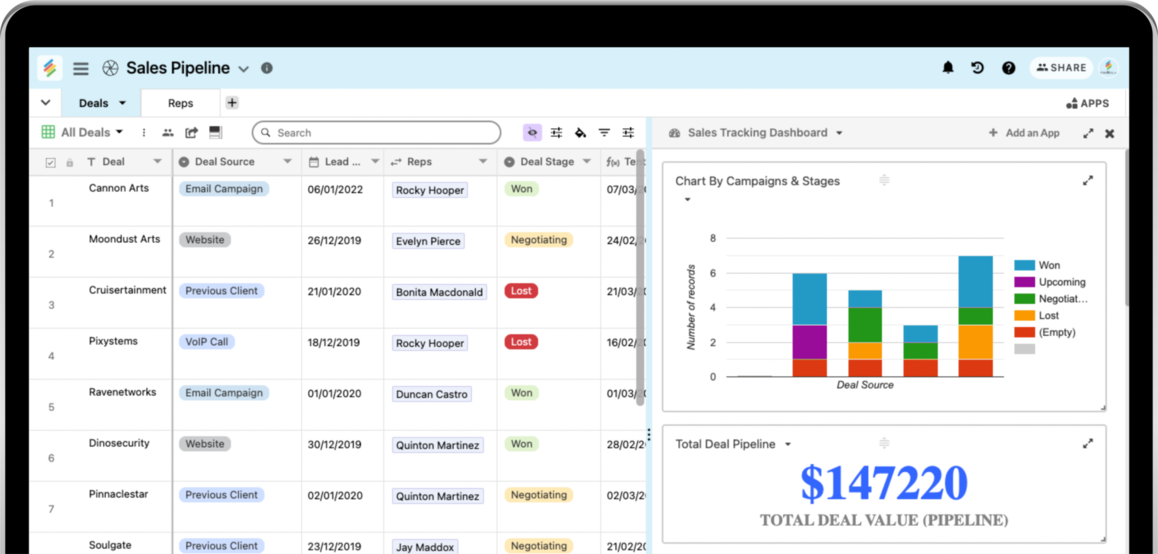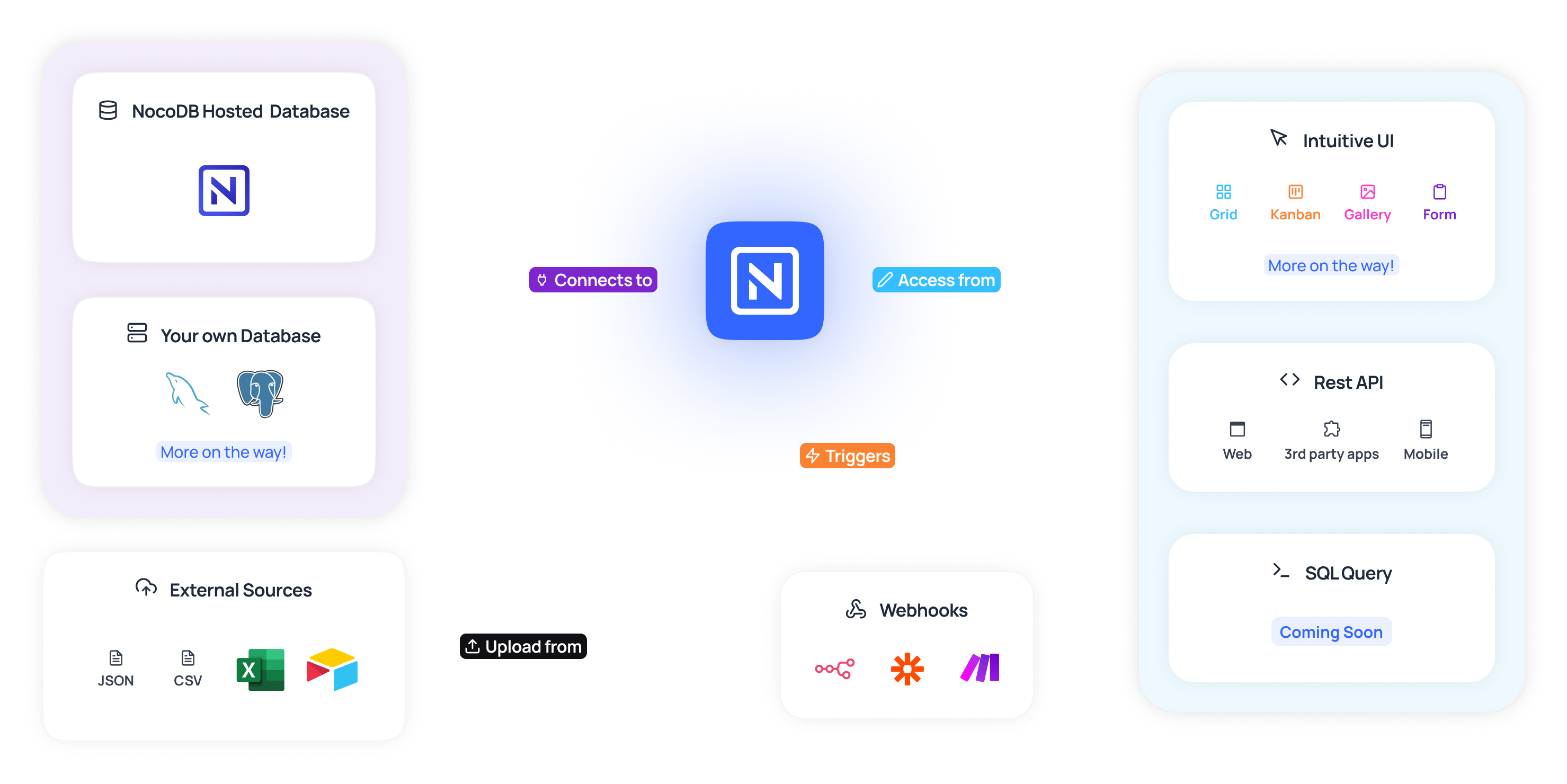Open the Power of No-Code for Open Platform Database Creation
Wiki Article
Discover Exactly How Scalable Data Sources Can Be Made Use Of Without Coding to Improve Your Business Workflow
In today's fast-paced service environment, the capability to take care of and analyze data successfully is vital. Scalable data sources, particularly when coupled with no-code options, supply a transformative method that encourages non-technical users to enhance operations. By utilizing devices that require no coding experience, organizations can improve their functional abilities while minimizing dependence on IT sources. The actual inquiry exists in understanding how these remedies can be customized to specific business needs and what prospective difficulties might arise in their implementation. Exploring these elements can light up the path to functional quality.Understanding Scalable Data Sources
Scalable data sources are important for modern-day company procedures, permitting organizations to effectively handle raising quantities of information without giving up performance. These databases are created to adapt and expand to the transforming needs of a company, making sure that they can manage larger datasets and more complex inquiries as business demands progress.Understanding scalable databases involves acknowledging their 2 main kinds: vertical scaling and horizontal scaling. Vertical scaling, or "scaling up," involves adding more power (CPU, RAM) to an existing server to improve efficiency. Alternatively, straight scaling, or "scaling out," requires adding more web servers to disperse the lots, which typically causes better adaptability and fault resistance.
Another crucial aspect is the architecture of scalable databases, which can be either relational or non-relational. Relational data sources, such as MySQL and PostgreSQL, are structured and utilize SQL for inquiries, while non-relational databases, like MongoDB and Cassandra, offer more adaptability with disorganized data.
Eventually, understanding scalable databases is essential for businesses intending to leverage information as a strategic property, allowing them to continue to be affordable in a progressively data-driven environment.

Advantages of No-Code Solutions
Unlocking the capacity of no-code remedies empowers services to simplify operations and boost productivity without the requirement for considerable programming knowledge. These platforms enable non-technical customers to develop, modify, and handle databases effortlessly, thus democratizing accessibility to modern technology across teams.Among the key advantages of no-code services is their speed of execution. Businesses can swiftly deploy applications and automate processes, considerably minimizing the moment invested on growth cycles. This dexterity makes it possible for companies to react promptly to market changes and customer requirements, promoting an affordable edge.
Furthermore, no-code platforms reduce reliance on IT departments for daily tasks, allowing technological groups to focus on more complicated jobs that call for specialized skills. This change not just maximizes source appropriation but likewise promotes development within the organization.
Cost-effectiveness is an additional benefit, as no-code remedies can lower growth and upkeep costs. By lessening the requirement for coding experience, business can harness the abilities of their existing workforce without the expenses of working with extra personnel.
Popular No-Code Data Source Devices
The increase of no-code services has brought about the introduction of different data source tools that accommodate organizations looking for efficiency and accessibility. These devices encourage individuals with limited technological expertise to develop, take care of, and control databases seamlessly.Caspio attracts attention for its capacity to construct web he has a good point applications without any type of coding. It enables services to produce robust data sources and release applications promptly, providing to different industry demands. In a similar way, Propensity provides easy to use interfaces and powerful information management abilities, enabling companies to develop custom applications tailored to their process.

Usage Instances in Organization Operations
Exactly how can companies leverage database devices to boost their procedures? Scalable databases offer organizations with effective capacities to take care of and examine data without the need for extensive article source coding knowledge. These devices can enhance different company processes, inevitably resulting in enhanced efficiency and performance.One famous use situation is consumer partnership management (CRM) Organizations can utilize scalable databases to track consumer interactions, choices, and comments, enabling personalized interaction and much better service. By systematizing this info, groups can work together more effectively and reply to customer demands in real-time.
Another substantial application is stock management. Companies can use no-code database devices to keep track of supply levels, track deliveries, and projection need. This ensures ideal inventory levels, lowers waste, and reduces stockouts.
In addition, project monitoring can take advantage of scalable databases by permitting teams to take care of tasks, target dates, and sources in a merged system. With real-time updates and data visualization, job supervisors can make informed decisions.
Beginning With Implementation
Carrying out scalable data sources in company procedures calls for a structured technique to guarantee effective assimilation and utilization. The primary step is to perform a thorough requirements evaluation, recognizing details company demands, information types, and anticipated development patterns. This fundamental understanding will certainly guide the selection of the suitable data source option.Next, pick an user-friendly, no-code database platform that aligns with your operational goals. no-code. Lots of modern-day remedies offer intuitive interfaces, allowing non-technical users to handle data successfully. After choosing a platform, establish a clear data design that outlines how data will be organized, accessed, and maintained
Training is critical; make certain that employee are outfitted with the essential abilities to use the database. Think about offering workshops you could look here or tutorials to familiarize team with the system's capabilities.
Final Thought
Finally, the combination of scalable databases through no-code remedies presents considerable advantages for business procedures. These platforms empower non-technical users to efficiently take care of and assess information, helping with boosted decision-making and collaboration. By embracing tools such as Airtable and Idea, companies can lower and enhance processes dependancy on IT resources. Inevitably, leveraging these modern technologies can bring about improved productivity and functional effectiveness, placing companies for sustained development in an affordable landscape.One popular no-code data source tool is Airtable, which integrates the capability of a spreadsheet with the power of a data source.Just how can businesses leverage database devices to enhance their operations? Organizations can use scalable data sources to track client interactions, preferences, and responses, making it possible for customized interaction and far better solution.Executing scalable data sources in organization operations requires an organized technique to make sure successful integration and usage.In verdict, the assimilation of scalable data sources via no-code solutions offers substantial advantages for company procedures.
Report this wiki page